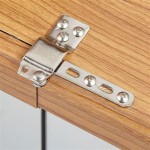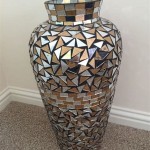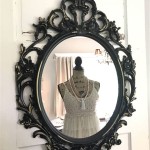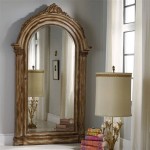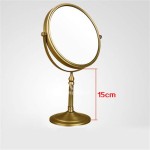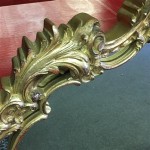Mirror Light Bulbs: A Comprehensive Guide
Mirror light bulbs offer a unique approach to lighting design, combining the functionality of a light source with the reflective properties of a mirror. This dual nature allows for innovative applications in various settings, from residential homes to commercial spaces. Understanding the technology, benefits, and applications of mirror light bulbs can help individuals make informed decisions when choosing lighting solutions.
Technology Behind Mirror Light Bulbs
The core technology of mirror light bulbs lies in the specialized coating applied to the bulb's surface. This coating consists of a thin layer of reflective material, often silver or aluminum, which creates the mirror effect. Unlike traditional mirrors, the coating is partially transparent, allowing light to pass through while still reflecting a portion of it. This balance between reflection and transmission is crucial for the bulb's functionality, enabling it to illuminate a space while simultaneously creating a reflective surface.
Different types of mirror light bulbs utilize various technologies to achieve this effect. Some bulbs employ a dichroic coating, which selectively reflects certain wavelengths of light while transmitting others. This can result in a colored mirror effect, adding an aesthetic dimension to the bulb's functionality. Other bulbs use a simple metallic coating, providing a neutral mirror finish. The choice of coating depends on the desired aesthetic and lighting requirements.
Benefits of Using Mirror Light Bulbs
Mirror light bulbs offer several advantages over conventional lighting solutions. One primary benefit is their ability to enhance brightness within a space. By reflecting light back into the room, these bulbs effectively amplify the light output, making a room appear brighter and more spacious. This is particularly beneficial in areas with limited natural light or where a higher level of illumination is desired.
Another advantage is the aesthetic appeal of mirror light bulbs. The reflective surface adds a decorative element to the fixture, creating a sense of elegance and sophistication. This makes them ideal for use in decorative lighting fixtures, such as chandeliers or pendant lights, where the bulb itself becomes a part of the overall design. The mirrored surface can also help to blend the bulb seamlessly into the fixture, minimizing its visual impact when not illuminated.
Applications of Mirror Light Bulbs
Mirror light bulbs find applications in a diverse range of settings. They are frequently used in hospitality settings, such as hotels and restaurants, to create a warm and inviting ambiance. The reflective properties of the bulbs can enhance the overall lighting scheme, creating a sense of spaciousness and luxury.
Residential applications also benefit from the use of mirror light bulbs. In bathrooms, they can be used in vanity lighting to provide bright, even illumination while simultaneously creating a stylish and functional mirror. In living rooms and dining areas, they can be incorporated into decorative fixtures to add a touch of elegance and enhance the overall aesthetic.
Different Types of Mirror Light Bulbs
Mirror light bulbs come in various shapes, sizes, and base types to accommodate different lighting fixtures. Common shapes include the traditional A-shape, globe, and candle shapes. Base types vary as well, with standard options like E26 (medium base) and E12 (candelabra base) being readily available. Understanding the different types available is crucial for selecting the correct bulb for the intended fixture.
Energy Efficiency Considerations
While mirror light bulbs offer several benefits, it's important to consider their energy efficiency. Compared to some newer technologies like LEDs, traditional incandescent or halogen mirror light bulbs may consume more energy. However, advancements in LED technology have led to the development of LED mirror light bulbs, offering a more energy-efficient option while retaining the aesthetic benefits of a mirrored surface.
Installation and Safety Precautions
Installing mirror light bulbs is typically straightforward, similar to installing standard light bulbs. However, it is important to ensure compatibility with the fixture’s socket and voltage requirements. Always turn off the power supply before replacing a bulb to avoid electric shock. When handling halogen bulbs, avoid touching the glass surface directly, as this can shorten the bulb's lifespan. Following manufacturer instructions and safety guidelines is always recommended when installing any type of light bulb.

Auslese Makeup Mirror Dimmable Usb Led Bulb Set Of 10 Bulbs Lights For Vanity With 3 Colour Modes Adjustable Brightness Easy Installation In Buy

Basic Living 10pcs Mirror Light Bulb Shein

Light Bulbs Globe Mirror Filament Edison Cfl Energy Saving Cable

Light Bulbs Globe Mirror Filament Edison Cfl Energy Saving Cable

10 Bulb Led Vanity Mirror Lights Baig Home Décor

10 14 Bulb Vanity Lights For Mirror Diy Hollywood Lighted Makeup With Dimmable Plug In Light Bathroom Wall Com

Warm Tone Lite Range Hollywood Vanity Mirror Led Bulb E27 3w 12v Dimmable Niches

Hollywood Mirror Bulbs Replacement Spares Dimmable Led E27 Mirrors

Led Globe Bulb G95 Lateral Mirror Cable

Buy 10 Bulb Led Vanity Mirror Lights At Best In Stan Idealancy

